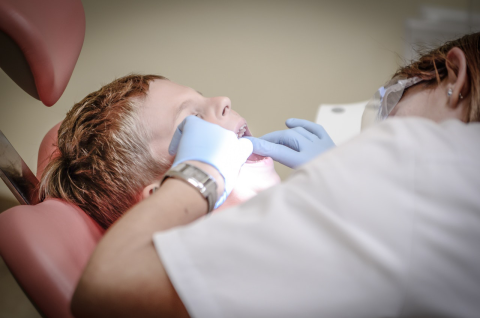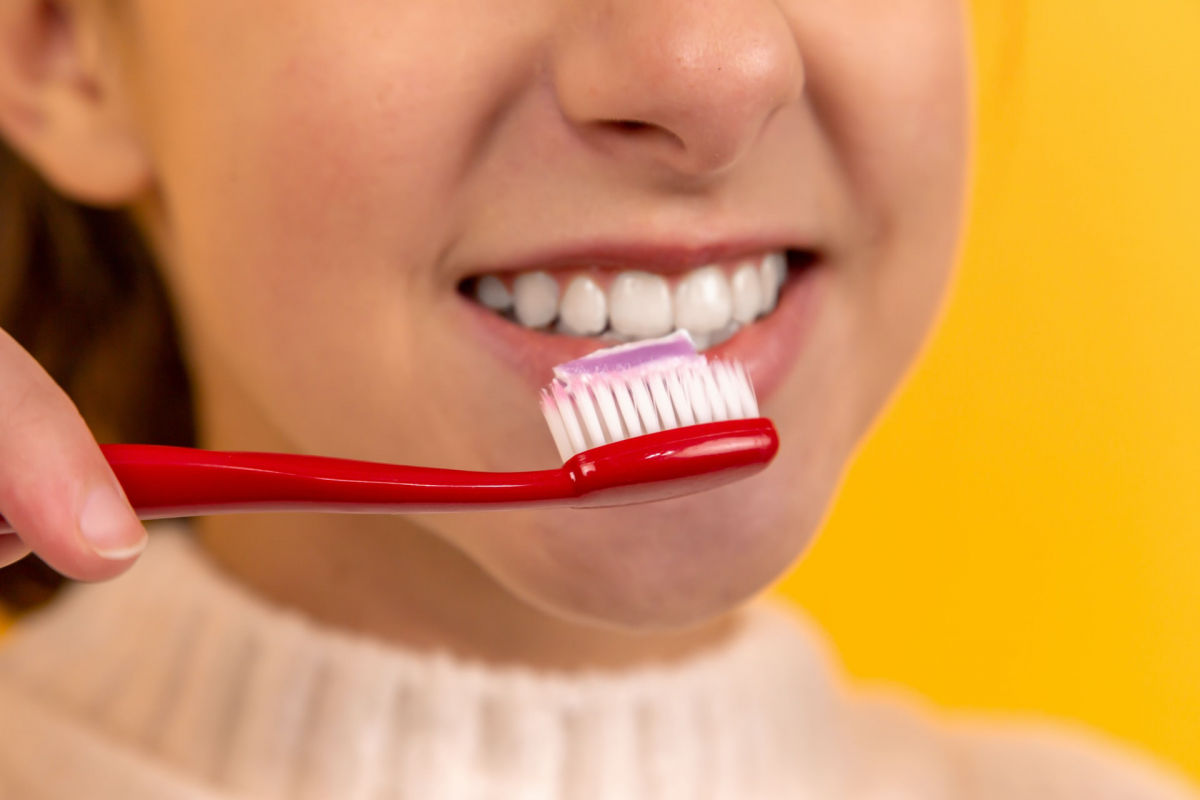Canker sores - causes, symptoms, treatment and prevention
Make an online appointment or call us at 0748 358 358
Book now onlineCanker sores are one of the most common problems that can occur in the mouth. These are small painful lesions that form in the oral cavity. Stress, minor sores inside the mouth, the acidity of fruits and vegetables, as well as spicy and hot foods can be risk factors for canker sores. Here's everything you need to know about canker sores:
Contents:
- What are canker sores
- Types of canker sores
- Canker sores - the causes of their appearance
- Canker sores - symptoms
- Canker sores - prevention and treatment.
What are canker sores?
Canker sores are shallow lesions that usually develop on the soft tissues of the oral cavity, on the inside of the cheeks and lips, or at the base of the gums. Canker sores are also called, in medical terms, foot-and-mouth disease and are shaped like white or yellow dots, surrounded by red tissue.
Canker sores are not contagious, but they are painful and can prevent mastication and speech. Anyone can develop canker sores, but they are more common in adolescents and young adults, especially in women. Canker sores are rare in children under the age of two. Although most people develop mouth sores only occasionally, up to 25% of the population has recurrent episodes. In their case, it is often a family history. They can be caused by hereditary factors, or they can be influenced by environmental factors (certain foods, certain allergens, etc.).
Types of canker sores
Most canker sores go away on their own after two weeks. In the case of unusually large and very painful canker sores, which do not show signs of healing, consultation with the dentist becomes mandatory.
There are three types of canker sores:
- Minor canker sores
- Major canker sores
- Herpetiform canker sores
Minor canker sores
These are the common canker sores, occur three to four times a year, and generally affect people between the ages of 10 and 20. They have an oval shape, with red edges, do not exceed one centimetre, and heal in about a week, without leaving scars.
Major canker sores
They are less common, bigger, and more painful. They have a round shape, with defined edges, but they can also have irregular edges when they are very large. Their healing can take up to a month and often leaves scars. They are more common among people who have previously had a form of canker sores. The cause of their appearance may be another health problem. A weakened immune system, Crohn disease, or a vitamin deficiency are among the risk factors.
Herpetiform canker sores
This type of canker sores is very rare and present herself as a group of tiny ulcerations with irregular edges. It usually heals in a week and leaves no scars. Older people are more likely to develop this form of canker sores.
Canker sores: Causes of their appearance
There is no scientific explanation for the development of canker sores. However, there are a few factors that have been shown to promote foot-and-mouth disease. These include:
- emotional stress.
- a slight lesion in the mouth, caused by an invasive dental procedure, excessive brushing, or an accidental bite.
- injured tissues caused by a sharp tooth or improperly maintained dental appliance.
- toothpaste and mouthwash containing sodium lauryl sulphate.
- food sensitivities, especially to chocolate, coffee, strawberries, eggs, peanuts, nuts, and spicy or acidic foods (lemons, oranges, apples);
- food allergies.
- a diet free of B-12 vitamin, zinc, folic acid, or iron.
- hormonal changes during menstruation.
- a viral infection.
- non-steroidal anti-inflammatory drugs, such as ibuprofen.
- Helicobacter pylori, the bacterium that causes peptic ulcers.
Canker sores can also be caused by certain health problems:
- Celiac disease, an intestinal disease caused by a sensitivity to gluten.
- Inflammatory bowel diseases, such as Crohn disease and ulcerative colitis.
- Behcet disease, a rare condition that causes inflammation throughout the body, including the mouth.
- A deficient immune system, which attacks healthy cells in the mouth, instead of pathogens (viruses, bacteria);
- HIV infection, which suppresses the immune system.
- In some cases, the factors that lead to the development of canker sores cannot be identified.
Canker sores - symptoms
Canker sores can often cause local pain and irritation. Signs that can help you recognize canker sores include:
- shape: round, well defined, smaller than one centimetre.
- colour: white or yellow in the centre, surrounded by a red border.
- positioning: in the area of the oral cavity (inside the lip, inside the cheeks);
- canker sores can also occur on or under the tongue.
- tingling sensation, up to 24 hours before onset.
- sometimes it affects the gums and, relatively rarely, the surface behind the mouth.
- it usually heals in a maximum of two weeks.
In more severe cases or if left untreated, canker sores can have the following symptoms:
- apathy.
- fever.
- fatigue.
- swollen lymph nodes.
- lesions that spread outside the mouth.
- discomfort or pain during brushing, talking or mastication.
Canker sores - prevention and treatment
Because the specific cause of canker sores is not known, there is no concrete answer to prevention. However, given the risk factors associated with the development of foot-and-mouth disease, there are a few steps that can be taken to prevent their occurrence or complications.
- Pay extra attention to food - avoid foods that can irritate the oral cavity (peanuts, chips, pretzels, certain spices, salty foods, and sour fruits) or that cause sensitivity or allergies.
- A balanced diet - whole grains, vegetables, and fruits are recommended to prevent nutritional deficiencies.
- Good oral hygiene - brushing your teeth regularly after each meal with a soft brush (to avoid irritation of delicate tissues), avoiding toothpaste and mouthwash containing sodium lauryl sulphate, and flossing once a day helps to maintain oral health.
- Less stress - if the appearance of canker sores is related to the person’s stress level, it is advisable to use relaxation techniques such as meditation to reduce stress.
The most common canker sores heal in a maximum of two weeks, without the need for medical treatment. However, more severe or recurrent cases can only be cured after a medical check-up in a dental clinic. These injuries:
- are large.
- are spreading rapidly.
- can appear immediately after the healing of others.
- are difficult to cure, although the risk factors (food, medicine, stress, etc.) have been removed.
- which creates difficulties in fluid consumption.
- which causes fever.
The dentist will establish the diagnosis based on a clinical examination or medical history. Therefore, as a rule, canker sores should be checked by a specialist if they do not heal after two weeks; it gets worse even if natural remedies are used; they occur more than three or four times a year or are many times in severe forms; manifested together with other symptoms (fever, headache, skin irritation, diarrhea) or are considered part of another condition.
When it comes to the treatment of canker sores, it can be of two types: medical and natural.
Medical treatment
Pain in canker sores tends to improve after a few days of onset. In the case of complex canker sores, which do not heal quickly or are recurrent, the dentist can offer several solutions:
- Mouthwash mixed with steroids or analgesics.
- Topical medication containing steroids, such as dexamethasone for inflammation, and analgesics such as lidocaine for pain relief.
- Oral medication, including hydrocortisone tablets.
- Nutritional supplements - if nutritional deficiencies cause canker sores.
- Cauterization - disinfection and treatment of wounds.
Natural treatment
There are several remedies that can be tried at home in order to speed up the healing of mouth sores and relieve discomfort and pain.
- Applying small amounts of ice, milk or honey to the lesions helps relieve pain and helps the healing process.
- Rinsing your mouth with a mixture of warm water and baking soda can also relieve pain.
In conclusion, canker sores are not contagious, but they can be extremely painful in severe cases. Although they can heal on their own, it is advisable to consult a dentist, especially in situations where they are recurrent or occur with other symptoms. Although the causes of the development of these lesions in the oral cavity have not been scientifically proven, there are several risk factors that play an important role in the appearance of canker sores.
Photo source: Pexels, Unsplash
Resources:
- https://www.medicalnewstoday.com/articles/303311#Treatment
- https://www.healthline.com/health/canker-sores#home-relief
- https://www.webmd.com/oral-health/guide/canker-sores
- https://my.clevelandclinic.org/health/diseases/10945-canker-sores
- https://www.mayoclinic.org/diseases-conditions/canker-sore/symptoms-causes/syc-20370615
- https://www.ncbi.nlm.nih.gov/pmc/articles/PMC4002348/












